Summary statistics:
Distance: 94 miles
Vertical: 20900'
Hours: ~21
07.23.13 Double Dip Course, 13 miles, 3000', 1h50m:
Similar time for this course as last week, but with no cramp breaks. Felt like I was doing good, but wasn't able to hit the speeds I wanted on the flats at the end.
07.24.13AM Crooked Trail, 5 miles, N/A, 40m:
Interval training to build up that flatland speed.
07.24.13PM Sentinel S Summit, 6 miles, 1500', 45m:
I haven't done this run in a while and I PR'd by a few minutes without really trying. It's good to see the times going down.
07.25.13 Big St. Joseph and Bass Creek, 18 miles, 6500', 6h30m:
I ran from the Bass Creek trailhead to the base of Big Joe's southeast face, and made the long march up to the summit. I was feeling pretty sluggish from intervals, and I felt slow to the base of the face. From there, it was 1500' of 2nd-3rd class up to the west ridge of the SE bowl, and just a walk from there to within a few hundred feet of the summit. I ended up descending into the bowl itself to get some water, and rather than go back up to the ridge, I decided to take a gully up through the big cliff bands on the east side of Joe's summit block, which ended up being 4th class, and ended with a steep field of terrible loose scree and talus at the top.
 |
| Big Joe ascent route. |
The descent went easily until reaching the bottom 1500', where I erroneously decided to drop off the east side of the ascent ridge into the stream gully in hopes of finding an easier way down. This way turned out to be slow and difficult, with featureless granite slabs getting steeper and steeper towards the creek. The lower parts had my full attention as I downclimbed 4th class terrain into the slide alder choked stream bottom. The thing about slide alder choked stream bottoms is that they're damn near impossible to make progress in, so I eventually managed to contour my way back around to the other side of the ridge, where I found the trail. This whole affair took me a really long time.
I had intended to continue up the south side of Bass Creek to Lappi Lake and perhaps Lappi Peak, but after running up and down the trail where the junction was supposed to be for a few miles each way, I could not find the trail, and concluded to call it a day, with a fast run out the Bass Creek trail, dodging day hikers, as is standard practice for these popular trails.
 |
| The view south from Big Joe. The only difference between this and all my other Bitterroot summit photos is that Big Joe isn't in this one. |
07.26.13 Sentinel N, 5 miles, 1400', 55m:
North Sentinel summit. The dog was hot so we went slowly.
07.27.13 Scapegoat Mountain Palisades, 37 miles, 5500', 8h:
North Fork Blackfoot trailhead to North Fork Cabin, up the Dry Fork, up Cabin Creek, down Dabrota Creek, down the North Fork Blackfoot, past North Fork Falls, and back to the trailhead.
The run to the cabin went quickly enough, and I was consciously keeping 10 minute pace, trying to be conservative since the run was the longest I've done by a fair margin. Continuing up the Dry Fork, the trail stayed good, and the running was easy. Made it to Cabin Creek at mile 10 in exactly 100 minutes, and from there turned northeast towards Scapegoat Mountain, which was visible 8 miles distant. The Cabin Creek trail was not so good, and had much deadfall and fairly indistinct track. Also, no one had been on it in a good while. The trail follows a bench, and much like everywhere else in the Scapegoat, is surrounded by 25 year old trees.
The creek bottom itself looked like good bear habitat, willows and patchy unburned timber with avalanche paths reaching the creek in a number of places, but the trail was following a bench, and I was glad to not be down there. Predictably however, after two miles, the trail dropped into the head high willows, and the bear sign started appearing. At first, it was mostly older scat, grizzly for sure, but not fresh. As I progressed up the trail, it became fresher and fresher, until I found one that was certainly from the night before or that morning, as well as some rubs, and my hackles started rising. So I did the only sensible thing, which was to stop running, and start walking slowly, making a lot of noise, and paying close attention to what was going on in the bushes around me. And so I trod lightly for the next five miles, until the trail started climbing up out of the creek bottom. Now, I'm generally cool with bears, but Cabin Creek made me uncomfortable. Perhaps it was the remoteness, or the confining vegetation, or whatever, but it had me spooked, and I was relieved to get to the headwall.
The climb up to the Cabin-Dabrota divide was easy and the trail was good and distinct. The wildflowers in the Scapegoat are in full effect right now, and the giant limestone palisades of Scapegoat Mountain along with the bursting Paintbrushes was classic Montana.
 |
| Wildflowers and a little piece of Scapegoat Mountain. |
 |
| Cabin Creek |
 |
| Scapegoat Palisades and Flint Mountain. |
07.28.13 N Sentinel/University Mountain/Crazy Canyon, 10 miles, 3000', 1h40m:
Slow recovery jog around the Sentinel Massif. Felt surprisingly good after yesterday's long run. Eating fish helps every time.












































